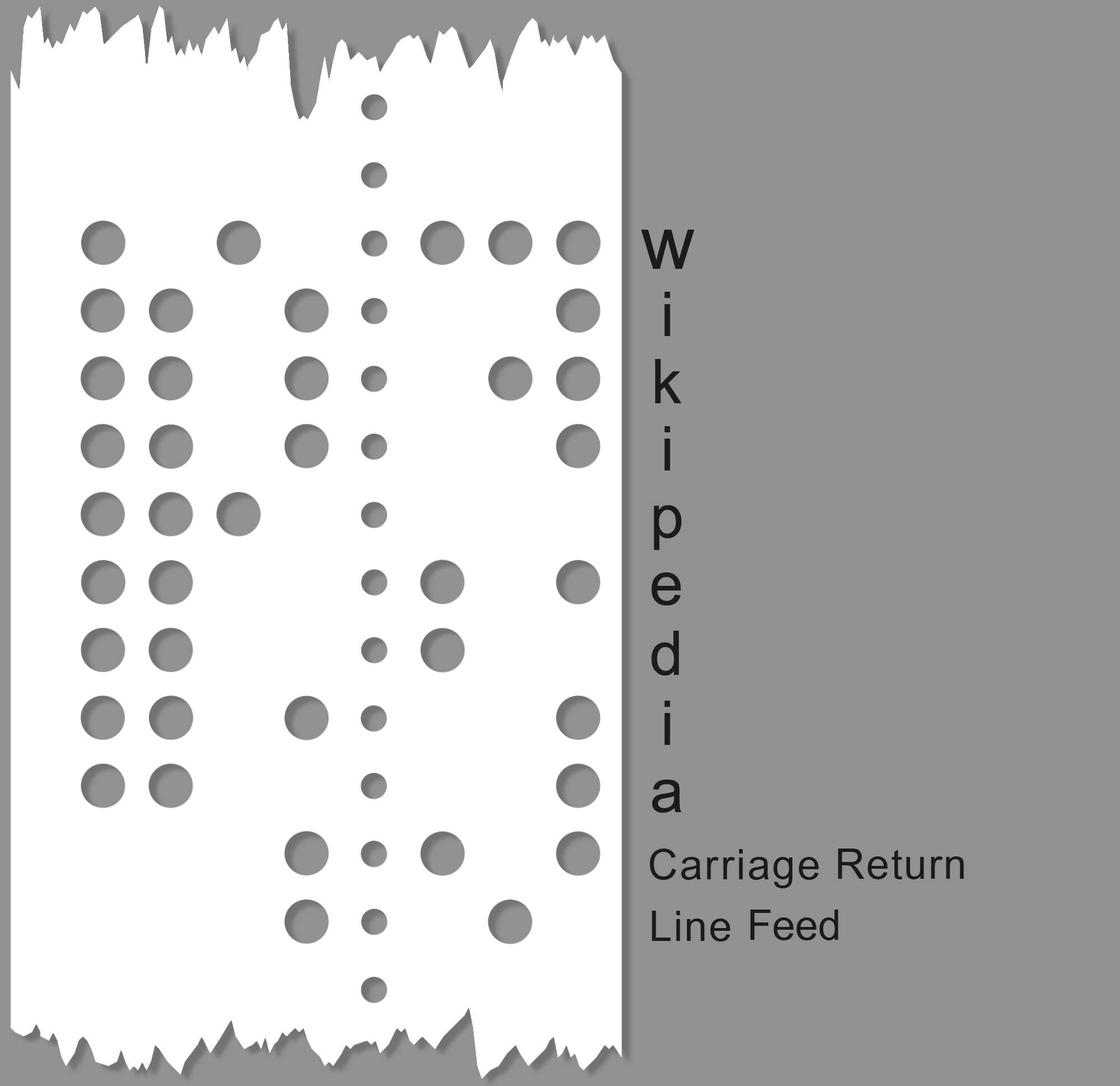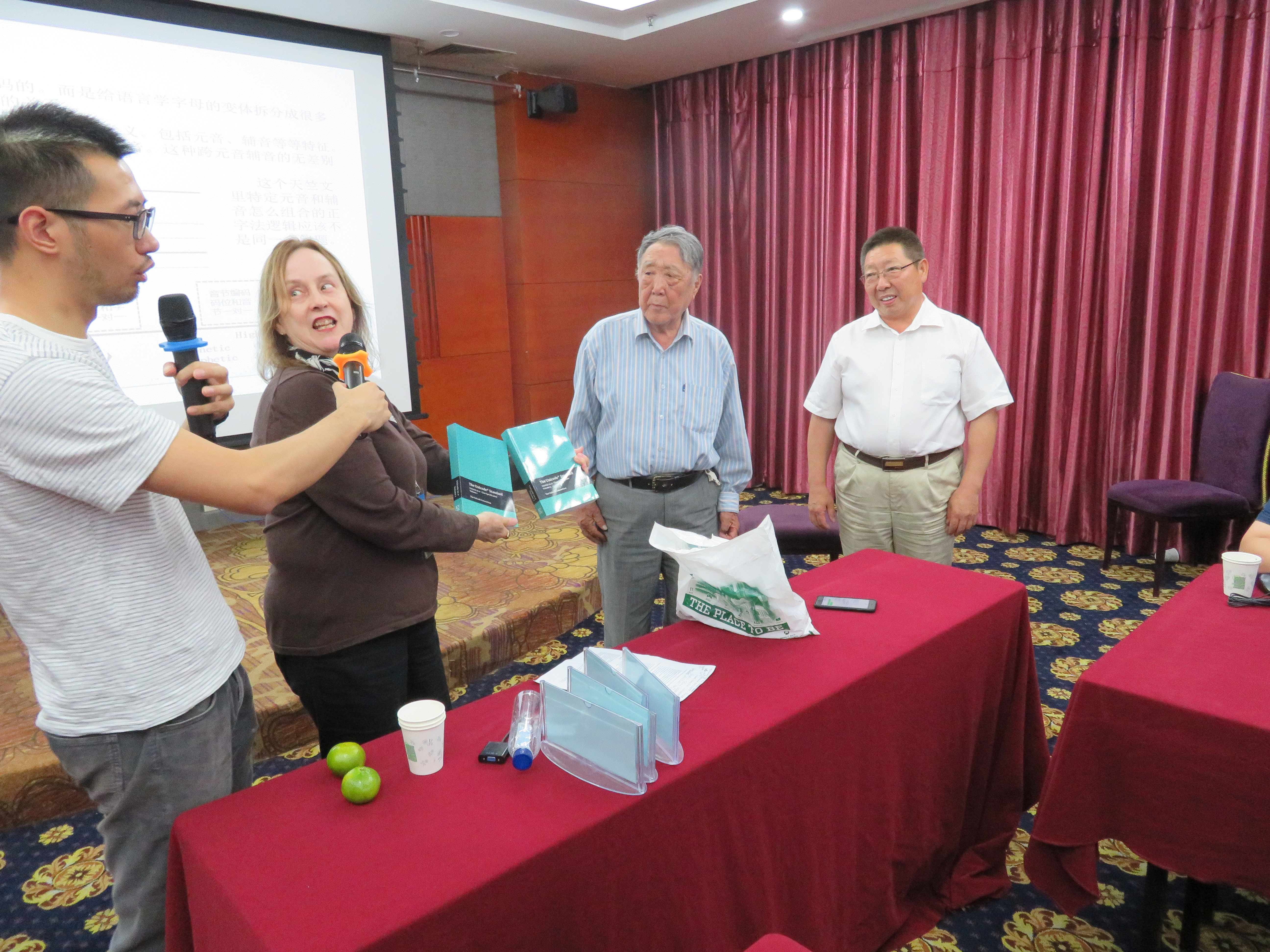|
Eight Ones
EO, or Eight Ones, is an 8-bit EBCDIC character code represented as all ones (binary 1111 1111, hexadecimal FF). It is used for synchronisation purposes, such as a time and media filler. When translated from the EBCDIC character set to code pages with a C1 control code set, it is typically mapped to hexadecimal code 9F, in order to provide a unique character mapping in both directions. See also *0xFF *Delete character The delete control character (also called DEL or rubout) is the last character in the ASCII repertoire, with the code 127. It is supposed to do nothing and was designed to erase incorrect characters on paper tape. It is denoted as in caret notat ... References {{compsci-stub Control characters ... [...More Info...] [...Related Items...] OR: [Wikipedia] [Google] [Baidu] |
EBCDIC
Extended Binary Coded Decimal Interchange Code (EBCDIC; ) is an eight-bit character encoding used mainly on IBM mainframe and IBM midrange computer operating systems. It descended from the code used with punched cards and the corresponding six-bit binary-coded decimal code used with most of IBM's computer peripherals of the late 1950s and early 1960s. It is supported by various non-IBM platforms, such as Fujitsu-Siemens' BS2000/OSD, OS-IV, MSP, and MSP-EX, the SDS Sigma series, Unisys VS/9, Unisys MCP and ICL VME. History EBCDIC was devised in 1963 and 1964 by IBM and was announced with the release of the IBM System/360 line of mainframe computers. It is an eight-bit character encoding, developed separately from the seven-bit ASCII encoding scheme. It was created to extend the existing Binary-Coded Decimal (BCD) Interchange Code, or BCDIC, which itself was devised as an efficient means of encoding the two ''zone'' and ''number'' punches on punched cards into s ... [...More Info...] [...Related Items...] OR: [Wikipedia] [Google] [Baidu] |
Character Code
Character encoding is the process of assigning numbers to graphical characters, especially the written characters of human language, allowing them to be stored, transmitted, and transformed using digital computers. The numerical values that make up a character encoding are known as "code points" and collectively comprise a "code space", a "code page", or a "character map". Early character codes associated with the optical or electrical telegraph could only represent a subset of the characters used in written languages, sometimes restricted to upper case letters, numerals and some punctuation only. The low cost of digital representation of data in modern computer systems allows more elaborate character codes (such as Unicode) which represent most of the characters used in many written languages. Character encoding using internationally accepted standards permits worldwide interchange of text in electronic form. History The history of character codes illustrates the evolvi ... [...More Info...] [...Related Items...] OR: [Wikipedia] [Google] [Baidu] |
Binary Numeral System
A binary number is a number expressed in the base-2 numeral system or binary numeral system, a method of mathematical expression which uses only two symbols: typically "0" ( zero) and "1" (one). The base-2 numeral system is a positional notation with a radix of 2. Each digit is referred to as a bit, or binary digit. Because of its straightforward implementation in digital electronic circuitry using logic gates, the binary system is used by almost all modern computers and computer-based devices, as a preferred system of use, over various other human techniques of communication, because of the simplicity of the language and the noise immunity in physical implementation. History The modern binary number system was studied in Europe in the 16th and 17th centuries by Thomas Harriot, Juan Caramuel y Lobkowitz, and Gottfried Leibniz. However, systems related to binary numbers have appeared earlier in multiple cultures including ancient Egypt, China, and India. Leibniz was specif ... [...More Info...] [...Related Items...] OR: [Wikipedia] [Google] [Baidu] |
Hexadecimal
In mathematics and computing, the hexadecimal (also base-16 or simply hex) numeral system is a positional numeral system that represents numbers using a radix (base) of 16. Unlike the decimal system representing numbers using 10 symbols, hexadecimal uses 16 distinct symbols, most often the symbols "0"–"9" to represent values 0 to 9, and "A"–"F" (or alternatively "a"–"f") to represent values from 10 to 15. Software developers and system designers widely use hexadecimal numbers because they provide a human-friendly representation of binary-coded values. Each hexadecimal digit represents four bits (binary digits), also known as a nibble (or nybble). For example, an 8-bit byte can have values ranging from 00000000 to 11111111 in binary form, which can be conveniently represented as 00 to FF in hexadecimal. In mathematics, a subscript is typically used to specify the base. For example, the decimal value would be expressed in hexadecimal as . In programming, a number ... [...More Info...] [...Related Items...] OR: [Wikipedia] [Google] [Baidu] |
Code Page
In computing, a code page is a character encoding and as such it is a specific association of a set of printable characters and control characters with unique numbers. Typically each number represents the binary value in a single byte. (In some contexts these terms are used more precisely; see .) The term "code page" originated from IBM's EBCDIC-based mainframe systems, but Microsoft, SAP, and Oracle Corporation are among the vendors that use this term. The majority of vendors identify their own character sets by a name. In the case when there is a plethora of character sets (like in IBM), identifying character sets through a number is a convenient way to distinguish them. Originally, the code page numbers referred to the ''page'' numbers in the IBM standard character set manual, a condition which has not held for a long time. Vendors that use a code page system allocate their own code page number to a character encoding, even if it is better known by another name; for example, ... [...More Info...] [...Related Items...] OR: [Wikipedia] [Google] [Baidu] |
C1 Control Code Set
The C0 and C1 control code or control character sets define control codes for use in text by computer systems that use ASCII and derivatives of ASCII. The codes represent additional information about the text, such as the position of a cursor, an instruction to start a new line, or a message that the text has been received. C0 codes are the range 00 HEX–1FHEX and the default C0 set was originally defined in ISO 646 (ASCII). C1 codes are the range 80HEX–9FHEX and the default C1 set was originally defined in ECMA-48 (harmonized later with ISO 6429). The ISO/IEC 2022 system of specifying control and graphic characters allows other C0 and C1 sets to be available for specialized applications, but they are rarely used. C0 controls ASCII defined 32 control characters, plus a necessary extra character for the DEL character, 7FHEX or 01111111BIN (needed to punch out all the holes on a paper tape and erase it). This large number of codes was desirable at the time, as multi ... [...More Info...] [...Related Items...] OR: [Wikipedia] [Google] [Baidu] |
Unicode Consortium
The Unicode Consortium (legally Unicode, Inc.) is a 501(c)(3) non-profit organization incorporated and based in Mountain View, California. Its primary purpose is to maintain and publish the Unicode Standard which was developed with the intention of replacing existing character encoding schemes which are limited in size and scope, and are incompatible with multilingual environments. The consortium describes its overall purpose as: Unicode's success at unifying character sets has led to its widespread adoption in the internationalization and localization of software. The standard has been implemented in many technologies, including XML, the Java programming language, Swift, and modern operating systems. Voting members include computer software and hardware companies with an interest in text-processing standards, including Adobe, Apple, the Bangladesh Computer Council, Emojipedia, Facebook, Google, IBM, Microsoft, the Omani Ministry of Endowments and Religious Affairs, ... [...More Info...] [...Related Items...] OR: [Wikipedia] [Google] [Baidu] |
Microsoft
Microsoft Corporation is an American multinational corporation, multinational technology company, technology corporation producing Software, computer software, consumer electronics, personal computers, and related services headquartered at the Microsoft Redmond campus located in Redmond, Washington, United States. Its best-known software products are the Microsoft Windows, Windows line of operating systems, the Microsoft Office Productivity software#Office suite, suite, and the Internet Explorer and Microsoft Edge, Edge web browsers. Its flagship hardware products are the Xbox video game consoles and the Microsoft Surface lineup of touchscreen personal computers. Microsoft ranked No. 21 in the 2020 Fortune 500 rankings of the largest United States corporations by total revenue; it was the world's List of the largest software companies, largest software maker by revenue as of 2019. It is one of the Big Tech, Big Five American information technology companies, alongside Alphabet ... [...More Info...] [...Related Items...] OR: [Wikipedia] [Google] [Baidu] |
0xFF
255 (two hundred ndfifty-five) is the natural number following 254 and preceding 256. In mathematics Its factorization makes it a sphenic number. Since 255 = 28 – 1, it is a Mersenne number (though not a pernicious one), and the fourth such number not to be a prime number. It is a perfect totient number, the smallest such number to be neither a power of three nor thrice a prime. Since 255 is the product of the first three Fermat primes, the regular 255-gon is constructible. In base 10, it is a self number. 255 is a repdigit in base 2 (11111111), in base 4 (3333), and in base 16 (FF). \left\ = 255. In computing 255 is a special number in some tasks having to do with computing. This is the maximum value representable by an eight-digit binary number, and therefore the maximum representable by an unsigned 8-bit byte (the most common size of byte, also called an octet), the smallest common variable size used in high level programming languages (bit being smaller, but rarely ... [...More Info...] [...Related Items...] OR: [Wikipedia] [Google] [Baidu] |
Delete Character
The delete control character (also called DEL or rubout) is the last character in the ASCII repertoire, with the code 127. It is supposed to do nothing and was designed to erase incorrect characters on paper tape. It is denoted as in caret notation and is in Unicode. Terminal emulators may produce DEL when key or or are typed. History This code was originally used to mark deleted characters on punched tape, since any character could be changed to all ones by punching holes everywhere. If a character was punched erroneously, punching out all seven bits caused this position to be ignored or deleted. In hexadecimal, this is 7F to rub out 7 bits ( FF to rubout 8 bits was used for 8-bit codes). This character could also be used as padding to slow down printing after newlines, though the all-zero NUL was more often used. The Teletype Model 33 provided a key labelled to punch this character (after the user backed up the tape using another button), and did not provide a key ... [...More Info...] [...Related Items...] OR: [Wikipedia] [Google] [Baidu] |



